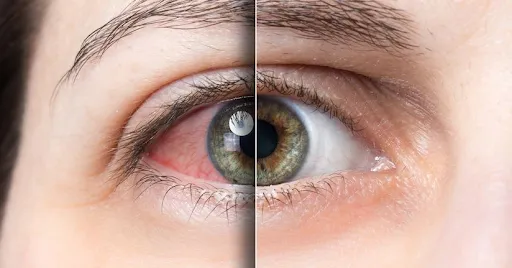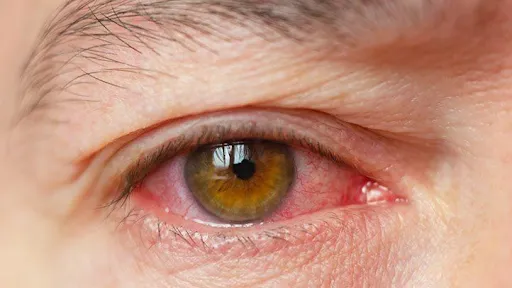Understanding Dry Eyes
What Causes Dry Eye Syndrome?
FSDAVCFEBFEVSDDVFSD
FSDAVCFEBFEVSDDVFSD
FSDAVCFEBFEVSDDVFSD
Overcoming Dry Eye Syndrome
Dry Eye Syndrome is a prevalent condition affecting millions worldwide, characterized by insufficient lubrication on the eye's surface.
This lack often results in a persistent sensation of dryness, alongside other discomforts such as stinging or burning eyes, which can significantly interfere with daily tasks like reading or using digital devices.
As we delve deeper into this topic, we'll explore not only the underlying causes and the impact they have on those affected but also the various ways to manage and treat this irritating condition.
Stay tuned as we uncover how to combat these challenges effectively, ensuring better eye health and comfort.
Dry Eye Syndrome is a prevalent condition affecting millions worldwide, characterized by insufficient lubrication on the eye's surface.
This lack often results in a persistent sensation of dryness, alongside other discomforts such as stinging or burning eyes, which can significantly interfere with daily tasks like reading or using digital devices.

As we delve deeper into this topic, we'll explore not only the underlying causes and the impact they have on those affected but also the various ways to manage and treat this irritating condition.
Stay tuned as we uncover how to combat these challenges effectively, ensuring better eye health and comfort.

The Symptoms of Dry Eye Syndrome
Dry Eye Syndrome presents a range of symptoms that can greatly impact both comfort and eye health. The most common symptom is a persistent dryness that leaves the eyes feeling parched or gritty, as if sand were trapped beneath the eyelids.
This dryness often leads to additional discomforts, including irritation that can become severe. Many individuals also experience fluctuating vision, which may blur intermittently during activities that strain the eyes, such as reading or screen use.
These symptoms can exacerbate under certain environmental conditions like windy or dry climates, and even indoors with air conditioning or heating, which can further dry out the eyes. This constellation of symptoms not only affects daily life but also highlights the importance of understanding and managing this condition effectively.
What Really Causes Chronic Dry Eyes

Dry Eye Syndrome arises from a blend of environmental, physiological, and lifestyle factors that impair the eyes' ability to maintain adequate moisture. One major physiological cause is aging, particularly among postmenopausal women, where hormonal changes adversely affect tear production. Additionally, certain systemic diseases such as diabetes and rheumatoid arthritis, along with medications like antihistamines and antidepressants, can diminish tear secretion.
Environmentally, dry eye can be exacerbated by low humidity environments, exposure to wind, and dusty or smoky conditions, all of which increase tear evaporation. Prolonged use of digital devices, which reduces the blink rate, also contributes significantly to dry eye symptoms by decreasing tear replenishment.
Dry Eye Syndrome arises from a blend of environmental, physiological, and lifestyle factors that impair the eyes' ability to maintain adequate moisture. One major physiological cause is aging, particularly among postmenopausal women, where hormonal changes adversely affect tear production. Additionally, certain systemic diseases such as diabetes and rheumatoid arthritis, along with medications like antihistamines and antidepressants, can diminish tear secretion.

Lifestyle choices, such as wearing contact lenses for extended periods and insufficient hydration, also play critical roles. Each of these factors alone or combined can disrupt the delicate balance of the tear film, essential for lubricating and protecting the eyes. Understanding these contributing elements is crucial for targeting dry eye management effectively, aiming to enhance both eye comfort and health.
Environmentally, dry eye can be exacerbated by low humidity environments, exposure to wind, and dusty or smoky conditions, all of which increase tear evaporation. Prolonged use of digital devices, which reduces the blink rate, also contributes significantly to dry eye symptoms by decreasing tear replenishment.
Lifestyle choices, such as wearing contact lenses for extended periods and insufficient hydration, also play critical roles. Each of these factors alone or combined can disrupt the delicate balance of the tear film, essential for lubricating and protecting the eyes. Understanding these contributing elements is crucial for targeting dry eye management effectively, aiming to enhance both eye comfort and health.
Treatment Options for Dry Eye Syndrome
The treatment of Dry Eye Syndrome encompasses a range of options from basic remedies to sophisticated medical interventions. Simple treatments like over-the-counter artificial tears can provide immediate relief by supplementing the natural tear film, alleviating the discomfort of dryness. For those with more persistent symptoms, gel drops or ointments may be recommended for overnight use to provide longer-lasting moisture.
When over-the-counter solutions are insufficient, prescription medications such as anti-inflammatory drops or cyclosporine can help increase tear production and reduce corneal damage. Lifitegrast is another option that works by inhibiting inflammatory responses that contribute to dry eye.
For severe cases, procedures like punctal plugs, which block the tear ducts to prevent tear drainage and maintain moisture on the eye's surface, might be necessary. Additionally, the LipiFlow system, which applies controlled heat and pressure to unblock oil glands in the eyelids, helps stabilize the tear film and prevent evaporation.
Lifestyle adjustments also play a critical role in managing dry eye. Patients are advised to take breaks during prolonged computer use to rest their eyes, increase blink frequency, and use humidifiers in dry environments to maintain ambient moisture levels.
Ultimately, effective management of Dry Eye Syndrome is tailored to the individual's specific symptoms and causes, requiring a multi-faceted approach that combines both medical treatments and practical lifestyle changes.
Preventative Strategies and Management
Preventative measures are vital in managing Dry Eye Syndrome and ensuring long-term eye health. Regular eye exams are crucial, as they allow early detection and treatment of symptoms before they escalate. Adjusting the environmental factors in your workspace or home can also make a significant difference. Using humidifiers to increase air moisture, avoiding direct airflow from heaters or air conditioners, and minimizing exposure to smoke or dust can help maintain healthy tear films.
For those who spend significant time on computers or digital devices, implementing the 20-20-20 rule is beneficial: every 20 minutes, look at something 20 feet away for at least 20 seconds to reduce eye strain and encourage blinking. Additionally, maintaining good hydration by drinking plenty of water throughout the day supports adequate tear production.

Preventative measures are vital in managing Dry Eye Syndrome and ensuring long-term eye health. Regular eye exams are crucial, as they allow early detection and treatment of symptoms before they escalate. Adjusting the environmental factors in your workspace or home can also make a significant difference. Using humidifiers to increase air moisture, avoiding direct airflow from heaters or air conditioners, and minimizing exposure to smoke or dust can help maintain healthy tear films.
For those who spend significant time on computers or digital devices, implementing the 20-20-20 rule is beneficial: every 20 minutes, look at something 20 feet away for at least 20 seconds to reduce eye strain and encourage blinking. Additionally, maintaining good hydration by drinking plenty of water throughout the day supports adequate tear production.

The diet also plays a role in eye health. Increasing the intake of omega-3 fatty acids found in fish, flaxseeds, and walnuts can improve the oil film produced by the meibomian glands, essential for tear stability. Lastly, regular cleaning of eyelids with appropriate solutions can prevent blockages of the oil glands, reducing the risk of dry eye symptoms.
By integrating these preventive and management strategies into daily routines, individuals can significantly mitigate the symptoms of Dry Eye Syndrome and enhance overall visual performance.
Enhancing Eye Health Through Proper Care
Recognizing and addressing Dry Eye Syndrome is essential for maintaining optimal eye health and improving your quality of life. Consistent care and appropriate management strategies can significantly alleviate symptoms, allowing you to enjoy everyday activities with greater comfort.
If you're experiencing persistent eye dryness or discomfort, consider scheduling a dry eye evaluation. Visit Kleinwood Vision for a comprehensive assessment, where our experts are dedicated to providing personalized care tailored to your specific needs. Enhance your eye health today—your vision deserves expert attention.

Contact Info
Hours of Operation
Mon - Fri | 9:00 AM - 5:00 PM
Sat - Sun | Closed
Holiday Hours: We are closed for the following holidays: New Years Day, Memorial Day, Independence Day, Labor Day, Thanksgiving Day, Christmas Day
© 2025 Kleinwood Vision. All rights Reserved.


